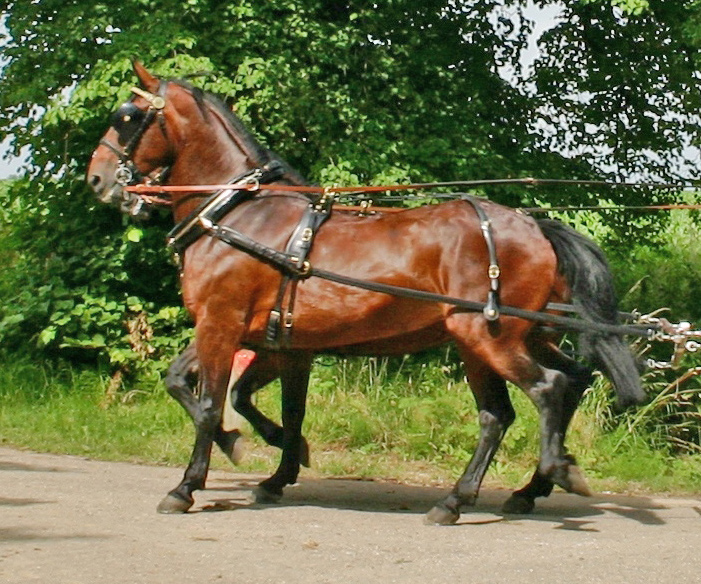The Cleveland Bay horse
Strong, powerful, enduring, and active, this docile horse has a pleasant character.

Caractère et aptitudes du cheval
Its action is long and vigorous. Its longevity is remarkable.
Utilisations du cheval
This versatile carriage-builder of the British royal stables is a superb horse for carriage driving, hunting, sporting competitions (show jumping, cross-country, cross-country…) and light drafting. This half-blood, one of the oldest British breeds, is thought to be the result of crossing Iberian and Barb horses with the Chapman Horse, used in the 16th and 17th centuries as a pack and packhorse by the Chapmen. The latter was a small, powerful, bay-coated horse found in the Cleveland district and Yorkshire in northern England. The robust Cleveland Bay, crossed with the Thoroughbred, produced the tall, lanky, bay-coated, and faster Yorkshire Coach Horse, now extinct. In the early 18th century, the Old Cleveland Bay was improved by the addition of two Thoroughbred stallions. The Cleveland Stud Book began in 1884. After a dangerous drop in numbers in the mid-19th century, the breed is now recovering. When crossed with the Thoroughbred, the Cleveland Bay produces excellent carriage horses and highly prized Hunters.
Morphologie du cheval
Broad, large, slightly strong head; slightly arched profile. Large, fine ears. Large eyes. Powerful but fine, long neck. Pronounced withers. Strong, sloping shoulders. Ample fore chest. Deep chest. Thick, well-structured, robustly built body. Strong loins. Well-developed hindquarters. Croup powerful, long, slightly sloping. Limbs clean, strong, well made, short with excellent bone structure. No dewlap. Wide, solid joints. Strong, hard hooves. Tail set high, very full. Coat always bays with black tips. No white markings. Originally, traces of welts on limbs. Height: 1.60 to 1.68 m.
For further information: Cleveland Bay


